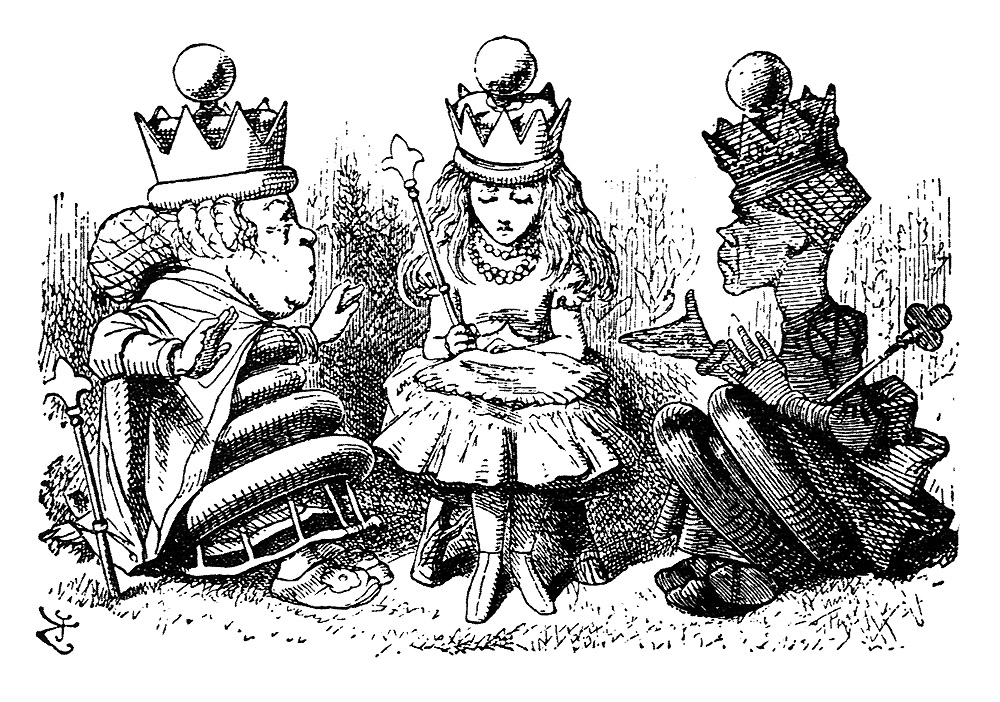Phantasmagoria

Discussing “Alice in Wonderland” and its sister novel: “Through the Looking Glass” is difficult. Contained within their pages isn’t so much a story as it is a series of strange vignettes with little or no connectivity. Despite the complete lack of a narrative the books are surprisingly absorbing, if only so we can see what sort of claptrap Alice will stumble into next. Stumble is the right word because for the entirety of these books she has no motive or purpose for being anywhere or doing anything–all her actions are at the whim of Wonderland’s eccentric denizens.
More elitist readers might dismiss the above paragraph and try to explain that Alice is actually a deconstruction of childhood innocence or some other seemingly intelligence remark. In their defense, “Wonderland” and “Looking Glass” certainly show glimpses of brilliance–like this scene in first book where Alice is gabbing with the Duchess.
“–I can’t tell you just now what the moral of that is, but I shall remember in a bit.”
“Perhaps it hasn’t one,” Alice ventured to remark.
“Tut, tut, child!” said the Duchess. “Everything’s got a moral if only you can find it.”
Whether this is evidence that there is indeed a subliminal message behind Carroll’s gobbledygook or not, is up to the reader. Lewis certainly shows a command over the English language that few other authors possess, with words and phrases that flow seamlessly together to create something wholly unique (even if it is vexing at times.)
But perhaps Carroll wanted us to keep mulling over whether what we just read was a masterpiece or merely pulp fantasy. If that’s the case, then he definitely deserves recognition for accomplishing what he set out to do, even if the end result is just a mass of confusion.
‘You may call it “nonsense” if you like, but I’ve heard nonsense, compared with which that would be as sensible as a dictionary!’ -The Red Queen
